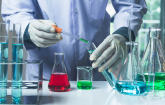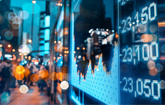Industrial Gases-Glass Market is Segmented by Type (Oxygen, Nitrogen, Hydrogen, Argon, Helium), by Application (Container Glass, Float Glass, Fibre Glass, Specialty Glass).
BANGALORE, India, April 8, 2025 /PRNewswire/ -- The Global Market for Industrial Gases-Glass was valued at USD 5211 Million in the year 2024 and is projected to reach a revised size of USD 6741 Million by 2031, growing at a CAGR of 3.8% during the forecast period.
Claim Your Free Report: https://reports.valuates.com/request/sample/QYRE-Auto-5K5225/Global_Industrial_Gases_Glass_Market
Major Factors Driving the Growth of Industrial Gases-Glass Market:
The Industrial Gases-Glass Market continues to adapt as businesses respond to evolving environmental and commercial pressures. Companies compete by refining their gas generation, storage, and distribution capabilities, while also forging partnerships with furnace and sensor technology providers. This interconnected approach leads to better integration, streamlined production, and enhanced sustainability. Industry participants are keenly aware of shifting customer tastes and tightening regulations, driving them to implement environmentally friendly combustion methods. As new applications for advanced glass materials emerge in electronics, construction, and packaging, the demand for high-quality, efficient manufacturing solutions expands. Leveraging the benefits of industrial gases remains a key strategy for maintaining a competitive edge, ensuring that this market remains a dynamic and integral part of modern industry.
Unlock Insights: View Full Report Now! https://reports.valuates.com/market-reports/QYRE-Auto-5K5225/global-industrial-gases-glass
TRENDS INFLUENCING THE GROWTH OF THE INDUSTRIAL GASES-GLASS MARKET:
Oxygen is fundamental to sustaining the high temperatures that power modern glass furnaces, making it a vital enabler of the Industrial Gases-Glass Market. By fueling cleaner, hotter combustion, it reduces overall energy consumption and helps manufacturers meet increasingly strict environmental standards. Oxygen-enriched processes allow glassmakers to melt raw materials faster, increasing throughput and enhancing product consistency. This reduction in nitrogen presence also lowers nitrogen oxide emissions, an outcome that aligns with governmental and community expectations. Firms worldwide have embraced oxygen-based systems to achieve both cost savings and sustainability, leading to a more eco-friendly production cycle. With ongoing emphasis on operational efficiency, oxygen continues to boost productivity, stimulate investments in cutting-edge furnace designs, and strengthen global market potential.
Hydrogen serves as a versatile, clean-burning fuel, positioning it as a significant catalyst for the Industrial Gases-Glass Market. When combined with oxygen, hydrogen delivers formidable heat output, enabling manufacturers to melt raw materials quickly and reduce time-to-market. Its minimal carbon footprint supports evolving sustainability efforts, appealing to glass producers and regulators alike. Hydrogen-enhanced combustion lowers nitrogen oxide levels, contributing to healthier working conditions and complying with strict environmental standards. By optimizing energy usage, hydrogen-based solutions help companies cut operational costs while maintaining superior glass quality. As green energy initiatives gain popularity, hydrogen's prominence as an essential fuel continues to rise, driving demand for innovative supply infrastructures and reinforcing its value in boosting growth across the global glass sector.
Container glass underpins numerous industries, from beverages to pharmaceuticals, making it a powerful driver of the Industrial Gases-Glass Market. High-quality container glass production demands steady furnace conditions and precise temperature control, both supported by industrial gases. These gases optimize the melting process, enhance clarity, and preserve consistent color while helping control defects that could weaken containers. By enabling furnaces to operate smoothly, oxygen and hydrogen allow manufacturers to maintain production speed and meet growing consumer needs. Modern lifestyle trends also intensify demand for advanced packaging, sparking interest in improved container glass designs with superior properties. As markets require eco-friendly and longer-lasting containers, container glass production continues to expand, reinforcing the indispensable role of industrial gases in this sector.
Growing environmental concerns drive governments and industry players to adopt cleaner, more efficient manufacturing methods. In glass production, industrial gases enable accurate combustion control, promoting lower greenhouse gas emissions and improved process stability. Companies prioritize sustainability by selecting fuels and methods that reduce pollutants, pushing broader adoption of oxygen and hydrogen for furnace operations. This strategy not only minimizes environmental impact but also secures social acceptance among communities advocating stricter ecological regulations. By investing in advanced gas technologies, organizations demonstrate a commitment to greener business practices, enhancing their market reputation. As nations enforce tougher regulations on industrial pollution, demand for industrial gas systems continues to rise, expanding opportunities for suppliers and reinforcing the global market's steady progression.
Manufacturers in the glass sector strive for flawless products, especially in high-value applications like specialty glass and packaging for sensitive contents. Industrial gases play a pivotal role by ensuring tighter temperature control during the melting phase, effectively limiting variations that could cause defects. Precise combustion delivered by oxygen or hydrogen streamlines heat distribution, allowing glassmakers to maintain clarity, structural integrity, and uniform thickness. Meeting elevated quality expectations also helps companies build trust with customers and fosters greater brand loyalty, fueling ongoing market expansion. Many firms rely on advanced monitoring systems that adjust gas flow in real time, preventing process disruptions. This emphasis on quality assurance and consistency solidifies the relevance of industrial gases, contributing to further adoption worldwide.
Efficient glass production demands a high-temperature environment, which can drive up fuel costs. By substituting or supplementing conventional fuels with industrial gases, manufacturers benefit from cleaner burning and improved heat transfer. Oxygen-enriched combustion, for instance, drastically lowers energy consumption by intensifying temperature zones, reducing overall furnace size, and cutting exhaust volumes. These gains allow companies to allocate resources elsewhere, lowering overhead and boosting competitiveness. Additionally, operators who integrate hydrogen minimize carbon-related expenses, aligning with long-term sustainability plans. As cost pressures mount and energy markets fluctuate, cost-effective combustion solutions become increasingly desirable. This enduring drive for efficiency cements industrial gases as an integral piece of furnace operations, enhancing production capabilities and encouraging market growth.
Ongoing developments in furnace design have made advanced industrial gas applications more feasible and beneficial. High-efficiency systems incorporate specialized burners, real-time sensors, and cutting-edge refractory materials to maximize combustion control. These upgrades help glassmakers refine temperature profiles, managing fuel consumption while achieving faster melting rates and better product uniformity. The compatibility of such designs with different gas blends also encourages flexible operations, enabling manufacturers to pivot quickly based on product type or production goals. Research and development efforts emphasize modular furnace designs that efficiently circulate gases, preserving consistent thermal conditions. This balance of adaptability and performance drives faster adoption of new technologies, broadening the industrial gases market. As furnace innovations persist, glass producers increasingly rely on gas solutions for sustained process improvements.
Consumer electronics, pharmaceuticals, and other specialized sectors require glass with unique properties, fueling the need for controlled, high-purity production environments. Industrial gases such as argon can protect molten glass from reactive elements, safeguarding the material's integrity during complex fabrication steps. Additionally, oxygen-enriched flames enable precise temperature gradients needed for specialty coatings and intricate shapes. These advancements allow producers to meet tighter specifications for optical clarity, chemical resistance, and mechanical strength. Emerging trends in solar panels, automotive displays, and medical devices further heighten demand for sophisticated glass products. By incorporating diverse gas solutions, manufacturers accommodate higher quality standards while staying competitive. The push for innovative applications boosts investment in gas-driven technologies, reinforcing market growth in both established and emerging economies.
Claim Yours Now! https://reports.valuates.com/api/directpaytoken?rcode=QYRE-Auto-5K5225&lic=single-user
INDUSTRIAL GASES-GLASS MARKET SHARE
Global Industrial Gases-Glass key players include Linde Group, Air Liquide, Praxair, Air Products and Chemicals, etc. The global top four manufacturers hold a share of about 70%.
Asia-Pacific is the largest market, with a share about 50%, followed by Europe, and North America, both have a share over 45 percent. Asia-Pacific experiences fast-paced growth, driven by urban expansion, rising disposable incomes, and soaring packaging needs. Large populations in countries like China and India further stimulate glass output, intensifying reliance on industrial gases.
In terms of product, Oxygen is the largest segment, with a share over 40%.
And in terms of application, the largest application is Container Glass, followed by Float Glass, Specialty Glass, Fibre Glass, etc.
Key Companies:
- Linde Group
- Air Liquide
- Praxair Inc
- Air Products and Chemicals
- Taiyo Nippon Sanso
- Air Water
- Messer
- Yingde Gases
- Gulf Cryo
Purchase Chapters: https://reports.valuates.com/market-reports/QYRE-Auto-5K5225/global-industrial-gases-glass/1
SUBSCRIPTION
We have introduced a tailor-made subscription for our customers. Please leave a note in the Comment Section to know about our subscription plans.
DISCOVER MORE INSIGHTS: EXPLORE SIMILAR REPORTS!
- Composite Cylinders Market revenue was USD 649 Million in 2022 and is forecast to a readjusted size of USD 828.1 Million by 2029 with a CAGR of 3.5% during the forecast period (2023-2029).
- Industrial Gas Mixtures Market
- Glass Alternative Materials Market
- Gas Distribution Panels Market
- Specialty Gases Market was estimated to be worth USD 9591.5 Million in 2023 and is forecast to a readjusted size of USD 13730 Million by 2030 with a CAGR of 5.2% during the forecast period 2024-2030.
- Bioactive Glass Market was valued at USD 214 Million in the year 2024 and is projected to reach a revised size of USD 334 Million by 2031, growing at a CAGR of 6.7% during the forecast period.
- Lead Glass market was valued at USD 124 Million in 2023 and is anticipated to reach USD 174.8 Million by 2030, witnessing a CAGR of 5.1% during the forecast period 2024-2030.
- Insulating Glass Units Market revenue was USD 36420 Million in 2022 and is forecast to a readjusted size of USD 39630 Million by 2029 with a CAGR of 1.2% during the forecast period (2023-2029).
- Gas Diffusion Layer market was valued at USD 661 Million in 2023 and is anticipated to reach USD 4030 Million by 2030, witnessing a CAGR of 29.9% during the forecast period 2024-2030.
DISCOVER OUR VISION: VISIT ABOUT US!
Valuates offers in-depth market insights into various industries. Our extensive report repository is constantly updated to meet your changing industry analysis needs.
Our team of market analysts can help you select the best report covering your industry. We understand your niche region-specific requirements and that's why we offer customization of reports. With our customization in place, you can request for any particular information from a report that meets your market analysis needs.
To achieve a consistent view of the market, data is gathered from various primary and secondary sources, at each step, data triangulation methodologies are applied to reduce deviance and find a consistent view of the market. Each sample we share contains a detailed research methodology employed to generate the report. Please also reach our sales team to get the complete list of our data sources.
GET A FREE QUOTE
Valuates Reports
sales@valuates.com
For U.S. Toll-Free Call 1-(315)-215-3225
WhatsApp: +91-9945648335
Website: https://reports.valuates.com
Blog: https://valuatestrends.blogspot.com/
Pinterest: https://in.pinterest.com/valuatesreports/
Twitter: https://twitter.com/valuatesreports
Facebook: https://www.facebook.com/valuatesreports/
YouTube: https://www.youtube.com/@valuatesreports6753
https://www.facebook.com/valuateskorean
https://www.facebook.com/valuatesspanish
https://www.facebook.com/valuatesjapanese
https://valuatesreportspanish.blogspot.com/
https://valuateskorean.blogspot.com/
https://valuatesgerman.blogspot.com/
https://valuatesreportjapanese.blogspot.com/
Logo: https://mma.prnewswire.com/media/1082232/Valuates_Reports_Logo.jpg




Share this article